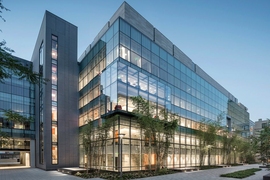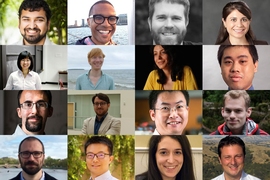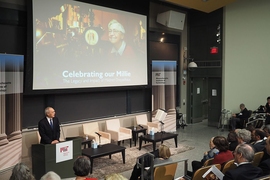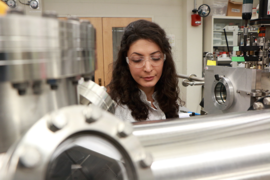Farnaz Niroui SM '13, PhD '17 is returning to MIT for the third time, following her stints as an undergraduate intern, a master’s and PhD student, and now as a professor in the electrical engineering department and researcher in the new MIT.nano facilities. What’s kept her coming back? Generally, she says, it’s the collaborative nature of MIT. “You can easily approach researchers from any department or research field to ask for their advice and to collaborate with them. Such an interdisciplinary environment is very important for me and my research” says Niroui, who is thrilled to be part of the new nano facilities.
“My research is heavily focused on nanotechnology and greatly benefits from the state-of-the-art characterization and fabrication tools. Part of my research also focuses on developing new tools and techniques related to nano,” says Niroui, who feels confident that MIT.nano will provide a very exciting platform to pursue such research.
As Niroui prepares to settle in again at MIT— her position officially starts on Nov. 1 — she looks forward to another source of inspiration: Her office will be what was once the office of world-renowned scientist Mildred Dresselhaus, the late “queen of carbon science.” “The fact that I was offered Millie’s office was very inspirational,” says Niroui. “I knew Millie as a grad student since our offices were very close to each other and I always looked up to her as a mentor (even though our interactions were quite limited). Being able to be in her office as I start my own independent academic career is extremely inspiring and very valuable to me.”
Niroui was first introduced to nanotechnology through a high school project focused on carbon nanotubes, which made her curious about “how and why small things can matter so much.” That’s just one of the things she says that she loves about nanotechnology, which uses new techniques, processes, and tools to address a variety of fields, including medicine, electronics, environment, consumer goods, and more. “The interesting point, is that the potential of nano is so broad that it can have implications in many fields and some that cannot necessarily even be envisioned currently without further research and exploration,” she says.
Niroui earned her undergraduate degree in nanotechnology engineering at the University of Waterloo, during which time she completed an internship at MIT in Robert Langer’s group doing bionanotechnology research, exploring gene delivery.
“The nano engineering undergraduate program I completed covered courses and concepts from electrical engineering, chemistry, and materials science — a very interdisciplinary program that focuses on both the fundamentals and the emerging technologies that are related to nanotechnology. Once you have the broad multidisciplinary background, it is important to seek further, more specialized expertise to be able to effectively contribute to the rapidly evolving field,” says Niroui, who chose MIT to do a master’s/PhD program in electrical engineering, with a focus on device physics and nanoelectronics.
While completing her PhD, working with Jeffrey Lang and Vladimir Bulović, Niroui observed some of the limitations in her field. “I started realizing how many challenges there are wanting to work on things that are in the extreme nanoscale dimensions while trying to solely rely on techniques that are currently available. At very small dimensions, you get limited by many factors, for example, even the smallest amount of roughness on surfaces or the slightest vibration or interference from the environment can matter. I realized that there is a need to develop new techniques.”
Addressing this issue is one of Niroui’s main research goals and something that will be a key objective of MIT.nano as well. “I’m so excited to be part of the beginning of MIT.nano and all the excitement that comes with it, not just in terms of the tools and techniques it’s going to bring, but also focusing as an Institute on bringing in more intellectual contribution to nanotechnology and initiating dialogue between different institutes.”
The design of the facility is unique, she says, and will offer increased opportunities for collaboration. “It’s providing a very central facility that is not restricted to just a particular discipline or conventional design and fabrication concepts. It allows researchers to bring in new materials, new techniques, and most importantly also provides us with a platform to work collectively to develop what is going to be needed to push the frontiers of nanotechnology to reach the dimensions and study the science that otherwise wouldn’t be possible.”










